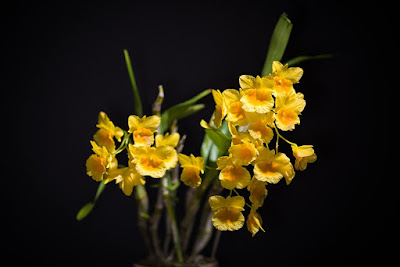Dendrobium capillipes is widely distributed in Southeast Asia. Natural habitats extend from Manipur in eastern India through the Moulmein region in Myanmar to the mountains of northern Thailand. This orchids also meet in the Xieng Kouang area in Laos and south-west China. They usually grow on exposed positions in dry deciduous forests at heights of 800-1200 m.
Dendrobium capillipes, also called as The Hairy Column Foot Dendrobium, Callista acrobatica, Callista capillipes, Dendrobium acrobaticum, is a species of the genus Dendrobium. This species was described by Heinrich Gustav Reichenbach in 1867.
IDENTIFY DENDROBIUM CAPILLIPES
Dendrobium capillipes is widely distributed in Southeast Asia. Natural habitats extend from Manipur in eastern India through the Moulmein region in Myanmar to the mountains of northern Thailand. This orchids also meet in the Xieng Kouang area in Laos and south-west China. They usually grow on exposed positions in dry deciduous forests at heights of 800-1200 m.
It is a miniature sized, warm to cool growing epiphytic, which can reach a height of 13-30 cm, with spindle-shaped, 6 noded, 5-15 cm long pseudobulbs arising in a cluster and having red-edged sheaths that yellow with age and carry deciduous, ligulate, or lanceolate, acuminate, rather laxly held, 8-15 cm long leaves.
The Hairy Column Foot Dendrobium bloom in the later winter and spring from an axillary, erect, 2.4" (6 cm) long, racemose, few flowered inflorescence with the racemes arising from the nodes near the apex of the leafless canes and carrying fragrant short lived flowers. The flowers are 2.5-4.0 cm in diameter. The narrow petals of the outer whorl and the rounded petals of the inner whorl are bright gold to orange-yellow. The wide, rounded petals of the inner whorl cover the lateral outer petals. The wide, round lip, darker than the petals of both whorls, has a slightly wavy edge. It has a large, gold-yellow thickening and reddish stripes in the throat.
DENDROBIUM CAPILLIPES CARE AND CULTURE
Cultural information should only be used as a guide, and should be to be adapted to suit you. Your physical location; where you grow your plants, how much time you have to devote to their care, and many other factors, will need to be taken into account. Only then can you decide on the cultural methods that best suit you and your plants.
Light:
Dendrobium capillipes needs a light level of 30000-40000 lux. From the end of spring to autumn, the plants should be shaded, but in winter the shading needs to be reduced or removed. The strong air movement is very important.
Temperature:
The average temperature of the summer day is 27-28 ° C, night 20 ° C, giving a daily difference of 7-8 ° C. In spring, the average day temperature is 31-34 ° C, night 14-21 ° C, and the daily difference is 10-19 ° C. The average temperature of the winter day is 26-30 ° C, night 10-12 ° C, with a daily difference of 15-19 ° C.
Humidity:
The Hairy Column Foot Dendrobium needs a humidity of 80-85% in summer and autumn, but drops to almost 55% in 2 winter months.
Substrate, growing media and repotting:
Dendrobium capillipes is best mounted on tree fern or cork. However, high humidity should be maintained and watering should be provided at least once a day in the summer. If it is not possible to mount plants, they can be grown in small pots or hanging baskets filled with loose, quickly drying ground. Repotting can be carried out at any time as new roots grow.
Watering:
Water is abundant for 6 months from spring to early autumn, but lesser for 4-5 months in winter and early spring. Dendrobium capillipes should be kept moist during active growth, but in autumn, when new growths reach maturity, the amount of water should be reduced.
Fertilizer:
It is recommended to use a 1/4-1/2 dose of orchid fertilizer weekly. From spring to mid-summer, high-nitrogen fertilizer is preferred, but then until the end of autumn it is necessary to switch to high-phosphoric fertilizer.
Rest period:
For most of the dry period in winter, Dendrobium capillipes should dry slightly between waterings, but should not remain dry for a longer period. Within 1-2 months at the end of winter, the amount of water should be reduced even more and the plants should be completely dry. Fertilization should be eliminated.















COMMENTS